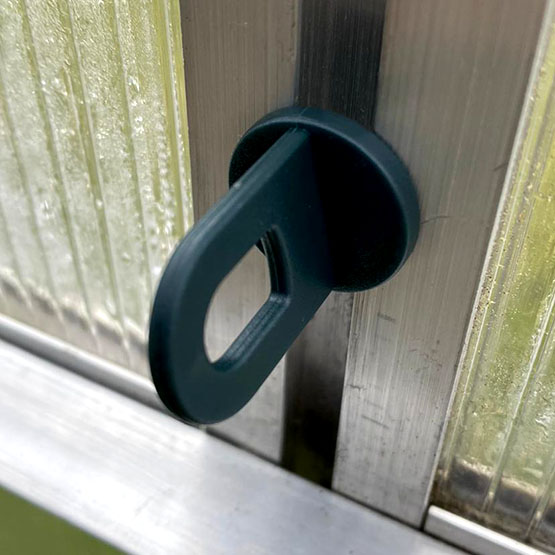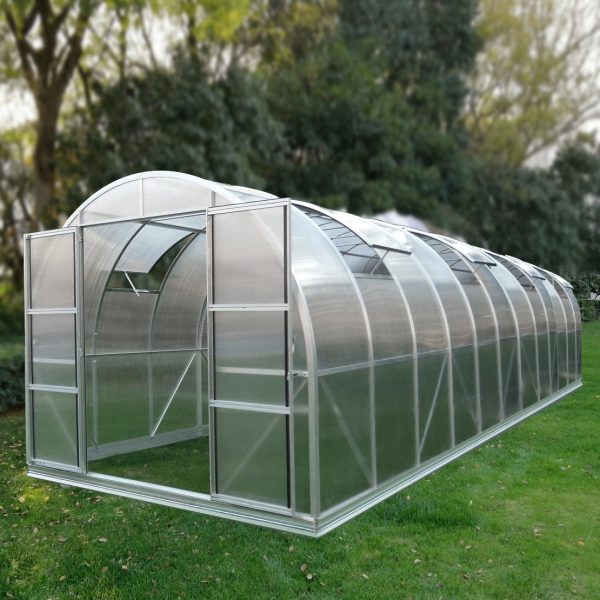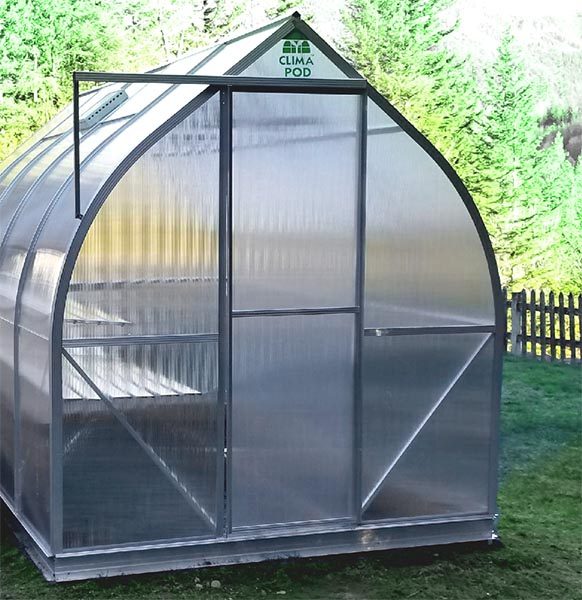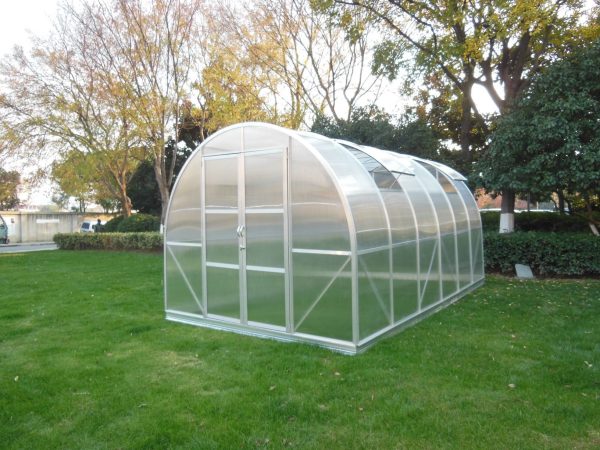The zealous greenhouse owner cares about it no less than about his own house. Keeping the greenhouse clean and tidy allows you to get a good harvest and spend less effort and money on growing it. Spring is the time for pre-sowing cleaning and service of a polycarbonate greenhouse.
Autumn vs Spring Cleaning – What Is The Difference
The end of the harvest does not mean the end of the gardening work. An equally important part remains – the cleaning and processing of the greenhouse. What’s the best thing to do in the fall? It is advisable that in the winter the greenhouse left as prepared as possible – with garbage removed, dug up and fertilized beds, etched earth from diseases and pests.
If in the summer the pests were thoroughly “housekeeping” in the greenhouse, in the fall, collect the larvae of the wireworm, whitefly and May beetle by hand. The autumn collection of larvae is necessary, because in the spring it is often necessary to deal with insects that have already emerged from them, and this is more difficult and more expensive.
Spring cleaning is a lighter version of autumn cleaning. It takes a lot of time to prepare the entire garden for sowing, so it is better to leave a minimum of work in the greenhouse.
If You Have Worked Well In Autumn
After high-quality autumn greenhouse service, you just have to perform a few steps:
- carry out temperature processing of the soil;
- dismantle supporting winter structures;
- wash polycarbonate and process metal parts in the presence of corrosion;
- if necessary, repair the greenhouse damaged during the winter.
Preparation for planting includes loosening the soil and restoring beneficial bacterial microflora in the soil using biological products.
Full Greenhouse Service In The Spring
If for some reason you did not manage to put things in order in the greenhouse in the fall, you will have to devote time to this in the spring. Calculate the start of work depending on when planting begins in your region. Soil cultivation (and this is the last stage) should be completed no later than two weeks before planting the plants in the greenhouse.
Freezing is one of the cheapest ways to get rid of harmful bacteria and insect larvae. At the end of winter, when there is still little frost, open the doors of the greenhouse.
In this way, you can get rid of not only harmful insects and bacteria, but also from ice. From the equalization of the internal and external temperatures, the ice crust will simply lag behind the walls.
After freezing the ground, give it moisture.

Bring as much snow as possible to the beds. It will begin to melt and saturate the soil with soft water.
Greenhouse Service: Garbage Collecting
The next step is greenhouse cleaning. Remove all inventory and equipment from the greenhouse. Safety winter structures can also be dismantled. How to clean the greenhouse:
- Rake the stems and leaves of last year’s plants.
- Dig up the ground and select the weeds and their roots.
- Remove all debris, including last year’s garters, pegs, and trellises. Burn them together with plant residues. They can retain fungus and other bacteria that will infect young plants. This measure is especially relevant if there was an outbreak of late blight in the greenhouse last summer.
Greenhouse Washing
In order for young plantings to grow strong and healthy, the greenhouse structure must be washed and processed. The process includes three stages:
- removing dirt from polycarbonate;
- inspection and processing of metal or wood frame parts;
- sanitizing surfaces.
Polycarbonate does not tolerate aggressive detergents. For cleaning, you will need soap containing no more than 3% alkali, a soft rag or foam sponge to gently remove dirt. The outside of the greenhouse can be cleaned with a hose. Use soapy water only in highly contaminated areas. Areas where mold has appeared (most often these are joints), wipe with a weak solution of potassium permanganate.

It is necessary to wipe off strong external contaminants carefully so as not to damage the film that protects against ultraviolet radiation.
Frame Treatment And Sanitary Cleaning Of Surfaces
Examine the frame for corrosion or rot. If rust is found on metal parts, wipe the area with a rust converter. Then treat the area with an antibacterial primer and paint. There should be no black spots on wooden structures. All suspicious parts must be replaced, and the frame must be completely treated with an antiseptic and painted too.
To be completely sure of the cleanliness of the greenhouse and the absence of pathogenic bacteria and fungi on its inner surfaces, spray them with a solution of Bordeaux liquid in a low concentration – 3-5%. So you will prevent further spread of rust and protect plantings from scab, rot and late blight.
It is convenient to use a hand-held garden sprayer for sanitizing the walls in the greenhouse.
However, spraying with Bordeaux liquid may not be enough if there were outbreaks of diseases or pests in the greenhouse in the previous season. In this case, you need to make fumigation with sulfur. This is a radical way of dealing with the enemies of planting, since as a result, not only the structural parts of the greenhouse are disinfected, but also the top layer of the soil.
Greenhouse Service: Soil Disinfection
The use of various drugs depends on the degree of contamination of the soil in the greenhouse and on what the plants were sick with in the previous summer. In case of severe infestation, it is better to treat the soil in autumn with aggressive chemicals. Bleach, formalin, Iprodion, copper sulfate and Bordeaux mixture are used.
In spring, it is preferable to use biological methods of soil disinfection. To do this, use drugs containing useful fungi – “Fitosporin”, “Trichodermin”, “Baikal EM 1”. They not only kill pathogenic microflora, but also populate the soil with beneficial bacteria.
A laborious and expensive method is replacing the topsoil. The old substrate is removed by 8–10 cm and replaced with a new one. It is not recommended to take it from the garden beds, it is better to buy a new one.
Another way to cultivate the soil is to sow green manure. They will improve the structure of the soil, prevent weeds from growing and disinfect it from pathogenic microflora. Mustard, legumes, lupine, oil radish are used as green manure.
Frame Repair and Strengthening
Inspect the greenhouse for damage.
- Sheets showing extensive cracks, bulging or cloudiness must be replaced. Small cracks in polycarbonate or gaps at the joints resulting from deformation of the structure can be filled with silicone or roofing sealant.
- If the frame is skewed, you can simply bend the deformed parts. In case of severe curvature, it is better to replace them.
- The precariousness of the structure is eliminated by strengthening the self-tapping screws connecting the frame to the foundation. They need to be tightened well with a screwdriver.
Take the time and energy to prepare your greenhouse in the spring. Your efforts will pay off a hundredfold – you make it easier for yourself to care for the plants and reap a good harvest.






